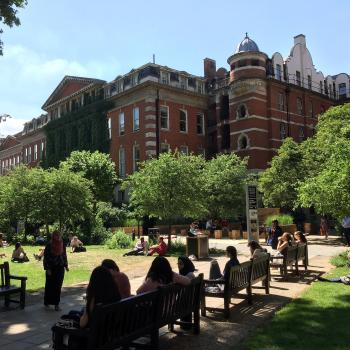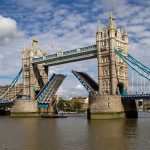
(Wikimedia Commons public domain)
I’m adding these two passages to my notebook, from Pim van Lommel, Consciousness Beyond Life: The Science of the Near-Death Experience (New York: HarperCollins, 2010):
The first systematic study of near-death experience was written in 1892 by the Swiss geologist Albert von Sankt Gallen Heim. In the Yearbook of the Swiss Alpine Club, under the heading “The Experience of Dying from Falls,” Heim described a total of thirty cases that were told to him in person; among them are the stories of Alpine mountaineers who survived near-fatal falls, including his own experience. He also included accounts of soldiers who sustained life-threatening injuries during war, of workers who fell off scaffolding, and of people who nearly drowned or died in accidents. He was the first to describe the experiences of people, such as soldiers, who actually nearly died of their serious injuries, and of those who merely expected to die, such as mountaineers. He concluded that people close to death or who were considered to be dead reported that “no grief was felt, nor was there paralyzing fright of the sort that can happen in instances of lesser danger. . . . There was no anxiety, no trace of despair, nor pain; but rather calm seriousness, profound acceptance, and a dominant mental quickening and sense of surety.” (106)
People from all walks of life from all over the world have NDEs. The various studies found no link between the experience of an NDE and the following markers: social class, race, gender, standard of education, profession, hometown, or marital status. Prior knowledge of the existence and content of an NDE made no difference either. Researchers found no link between religion and the experience of an NDE. It did not matter whether people were Protestant, Catholic, Jewish, Muslim, Hindu, Buddhist, agnostic, or atheist. Neither did it matter whether or not people actually practiced their religion through regular church attendance. But because individual, cultural, and religious factors do play a role in coming to terms with the experience, adherents of the different religions describe and interpret the NDE differently.
Few intercultural NDE studies have been published. Brief mention should therefore be made of a prospective study from Japan, which looked at people who had been in a deep coma as a result of a cardiac arrest, an apnea, a brain hemorrhage, or a serious traffic accident. Upon waking from their coma, 37 percent of patients in this study reported an NDE with all the typical elements we know from Western studies. Further analysis found that in Japan too there were no differences between people with and without an NDE in terms of gender, profession, religion, or standard of education. (110)
***
An interesting piece from the German theoretical physicist Sabine Hossenfelder:
Posted from Seaside, Oregon












